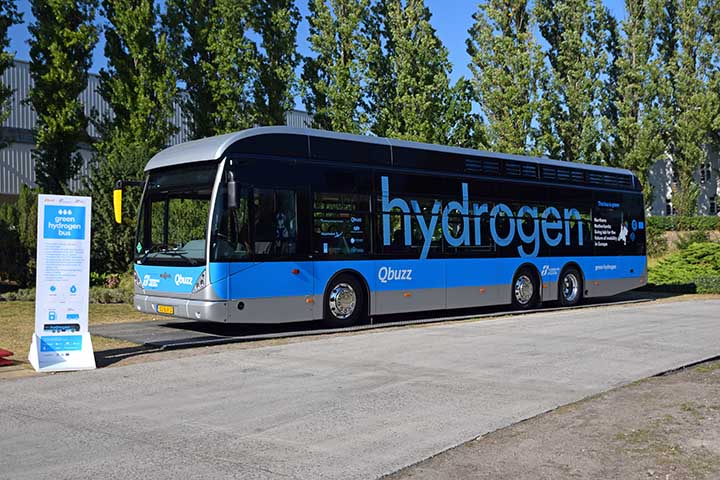Hydrogen Poised to Play Prominent Role in the World’s Energy Transition
Credit to Author: Aaron Larson| Date: Thu, 16 Jun 2022 17:05:44 +0000

People around the world are searching for ways to decarbonize, and green hydrogen is a fuel that can help in that effort. Green hydrogen is produced through electrolysis using renewable energy, such as wind and solar power. Although most hydrogen produced today is made from natural gas, often referred to as gray hydrogen, new capacity is being added regularly to increase the amount of green hydrogen available to consumers.
“We’re in the process of a major transformation in energy, and I think many people—people like Goldman and Bloomberg—believe that we’re going to be helping reduce the carbon footprint of the world by 20% by using hydrogen,” Andy Marsh, CEO of Plug Power, said as a guest on The POWER Podcast.
Although talk of a hydrogen economy may seem to some observers to be a relatively new development, Marsh noted that Plug Power has been in the fuel cell and hydrogen business for a quarter century. “What we’re kind of renowned for is that we created the first market for fuel cells,” Marsh explained. “We ended up putting fuel cells into forklift trucks for people like Walmart or Amazon.”
In fact, Plug has more than 60,000 fuel cells in the field, according to Marsh. He said there are at least 185 distribution centers, which are primarily delivering food and retail goods, using Plug fuel cells. Plug’s equipment is also helping manufacture cars.
However, the energy transition is the driving force behind recent growth. “All these activities have a lot to do with job creation. Over the past two and a half years, Plug has created over 2,300 jobs. Now, we have 3,000 employees,” said Marsh. “When I sit back and look at it, about 20% of our employees made the transition from the oil and gas fossil fuel industry to a clean energy. And finally, with everything going on in Ukraine, everybody’s beginning to realize that it’s so important for folks in the free world to be able to strive for energy independence. And I think hydrogen—the fact that you can create green hydrogen from green electricity that can be locally sourced—really is unique and can be used in such a wide variety of applications.”
Marsh suggested the best use of green hydrogen today is as a substitute for gray hydrogen used in the steel and fertilizer industries. The switch would be a big step toward cleaning up these hard-to-decarbonize sectors. “That’s the biggest opportunity in the near term,” he said.
Delivery van applications, such as for Amazon, UPS, FedEx, and others, offer another opportunity for hydrogen. While Marsh admitted there’s going to be a lot of electric vehicles operated as delivery vans, he suggested fuel cells offer a more attractive option in some cases. Referencing a study conducted by DHS, Marsh said when going greater than 150 miles and as van sizes increase, fuel cells make good sense. In early 2021, Plug and Renault launched a joint venture (JV) in France. The partners are targeting a 30% share of the fuel cell–powered light commercial vehicle market in Europe.
While several countries in Europe are firmly behind the hydrogen movement, Marsh said the U.S. is still ahead in the hydrogen game. “One of the misnomers is that the U.S. has not been the leader,” he said. “There are more fuel cells deployed in the U.S. than anywhere else in the world. There’s more hydrogen generated—especially liquid hydrogen, which is critical for this industry—in the U.S. than anywhere else in the world,” he said. “I don’t see the U.S. behind at all, and I see some of the policy discussions that are still going on in D.C., including a production tax credit for hydrogen, as well as an extension of the investment tax credit, are all going to be quite beneficial to this industry.”
Yet, Plug is very involved in Europe. “Europe is my new other home,” Marsh quipped. “We have [the JV] in France with Renault—we’re manufacturing commercial vehicles as we speak. We do our electrolyzing system design in Holland. We have a service center in Germany, and we have a JV for generating green hydrogen with Acciona in Spain. And I can’t forget the announcement from last week where we’re looking to build 35 tons of liquid hydrogen capacity at the port of Antwerp, which is, after Houston, the second-largest chemical cluster in the world.”
When it comes to transporting hydrogen, Marsh suggested pipelines are vital. He offered an example to make his point, saying hydrogen could be moved a certain distance through a pipeline for roughly 3¢ to 4¢ per kilogram (kg), whereas, moving it the same distance as liquid hydrogen might cost 20¢/kg and in gaseous form via trucks might cost 80¢/kg. “For this to be cost-effective, pipelines are really important,” he said.
To hear the full interview, which includes more about government policies, blue hydrogen, cost improvements, and future developments, listen to The POWER Podcast. Click on the SoundCloud player below to listen in your browser now or use the following links to reach the show page on your favorite podcast platform:
For more power podcasts, visit The POWER Podcast archives.
—Aaron Larson is POWER’s executive editor (@AaronL_Power, @POWERmagazine).
The post Hydrogen Poised to Play Prominent Role in the World’s Energy Transition appeared first on POWER Magazine.